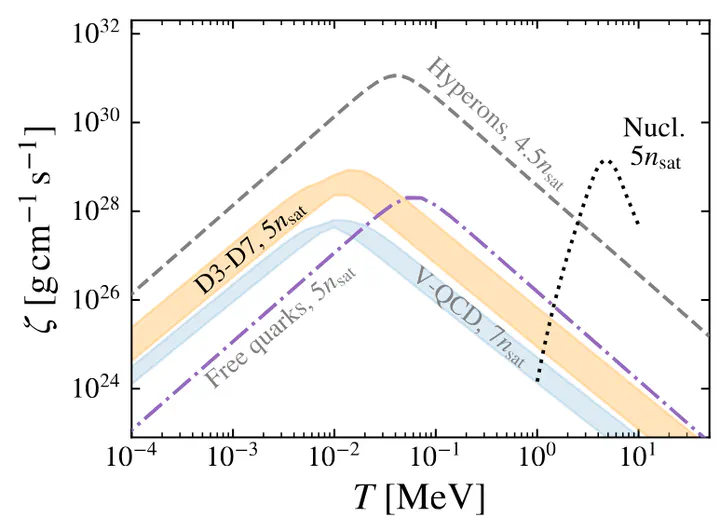Estimate for the Bulk Viscosity of Strongly Coupled Quark Matter Using Perturbative QCD and Holography
Feb 1, 2024· ,,,,,,,·
1 min read
,,,,,,,·
1 min read
Jesús Cruz Rojas
Tyler Gorda
Carlos Hoyos
Niko Jokela
Matti Järvinen
Aleksi Kurkela
Risto Paatelainen
Saga Säppi
Aleksi Vuorinen
 The speed of sound in paired pQCD
The speed of sound in paired pQCDAbstract
Modern hydrodynamic simulations of core-collapse supernovae and neutron-star mergers require knowledge not only of the equilibrium properties of strongly interacting matter, but also of the system’s response to perturbations, encoded in various transport coefficients. Using perturbative and holographic tools, we derive here an improved weak-coupling and a new strong-coupling result for the most important transport coefficient of unpaired quark matter, its bulk viscosity. These results are combined in a simple analytic pocket formula for the quantity that is rooted in perturbative quantum chromodynamics at high densities but takes into account nonperturbative holographic input at neutron-star densities, where the system is strongly coupled. This expression can be used in the modeling of unpaired quark matter at astrophysically relevant temperatures and densities.
Type
Publication
Phys.Rev.Lett. 133 (2024) 7, 7
We calculate state-of-the-art results for an important transport property in deconfined quark matter: the bulk viscosity. This quantity characterizes the rate of energy dissipation as the system undergoes cycles of compression and expansion. We obtain results using perturbative and nonperturbative (holograhic) methods, which so good agreement with each other as well as a marked difference from the result for confined hadronic matter. This result will allow us to perform improved simulations of binary neutron-star mergers when the matter enters the deconfined quark phase.